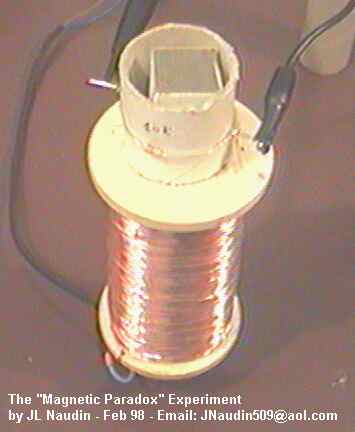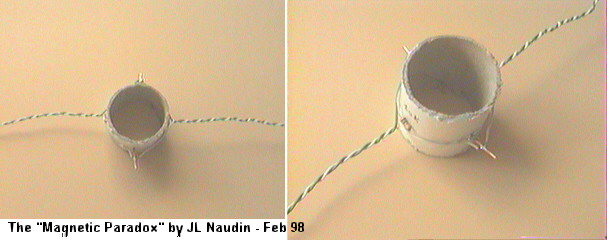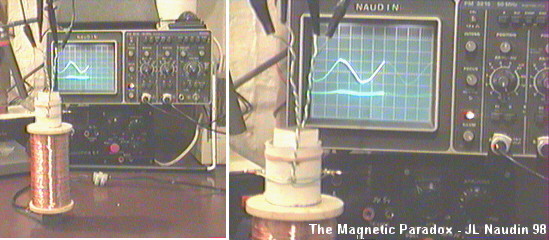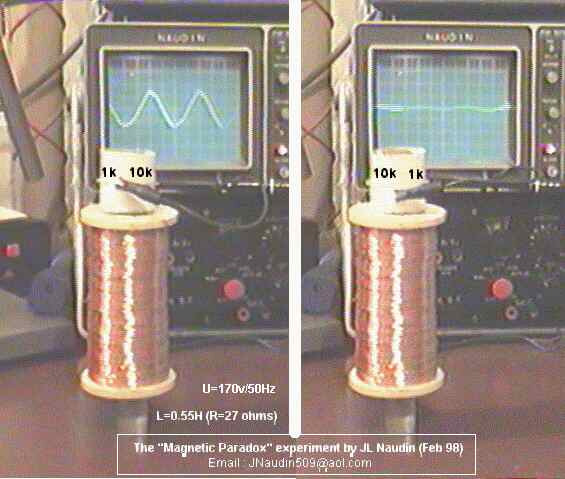

The "Magnetic Paradox" experiment
created on 02/01/98 - JLN Labs - last update on 02/01/98
Ok, now, I explain you how this experiment can be done with ONLY 3 components. This seems "crazy" and I suggest strongly you test it by yourself...
Take a high inductance coil with an soft iron core, my inductor has 0.55 Henry of inductance and a resistance of 27 ohms. The coil is connected to a 170V AC source (50Hz), the voltage is not critical, you need only to create a variable magnetic flux.
Connect two resistors (a 1 kohms and a 10 kohms) around this soft iron core like indicated in the diagram below. In my design I have glued these two resistances around a small cardboard tube (see the picture).
Send the AC current in the coil and measure the voltages with a simple scope, like this :
The V1 voltage is measured between the points A and B on the left side of the coil
The V2 voltage is measured between the points A and B on the right side of the coil
The crazy result is that the V2 voltage is greater than the V1 voltage between the same points A and B...
For more informations about this experiment, you may see also the documents :
- Faraday's Law - Demonstration of a teaser by D.R. Moorcroft (Dep. fo Physics, University of Western Ontario) - Am.J Phys Vol37
- Experimental "paradox" in electrodynamics by W.Klein - Am.J.Phys 49(6) June 1981



Suggested wires setup, use twisted wires for better measurements.

Measurement with twisted cables and axial probe setup, see the two signals (V1,V2)

See also "The Magnetic Paradox" explanation by Cyril Smith
Return to the Quantum Electrodynamics page